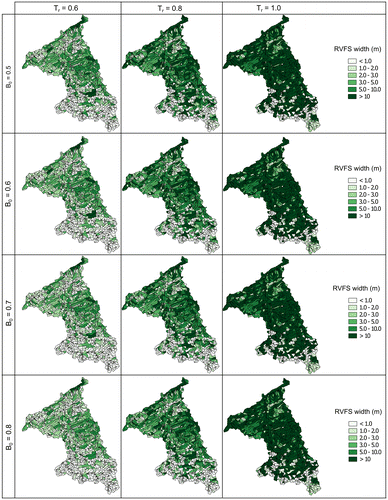Figures & data
Figure 1 Schematic illustration of the effect of flow convergence (plan shape) on filter strip efficiency (in red in the flow area). (a) Sheet flow: no flow convergence on a rectilinear slope; runoff flows over the entire filter strip length at relatively small discharge. (b) Concentrated flow: flow convergence increasing runoff discharge through a restricted area (small channel) over the filter strip; the filter strip receives almost no runoff elsewhere; the flow is concentrated in some places. (c) Multi-concentrated flow: runoff is divided among a number of rills; this situation is intermediate between sheet flow and concentrated flow.

Figure 2 Schematic representation of a vegetated filter: (a) degree of submergence on vegetated filters, and (b) relative submergence as a function of Manning’s roughness coefficient (adapted from Wilson et al. 2005).
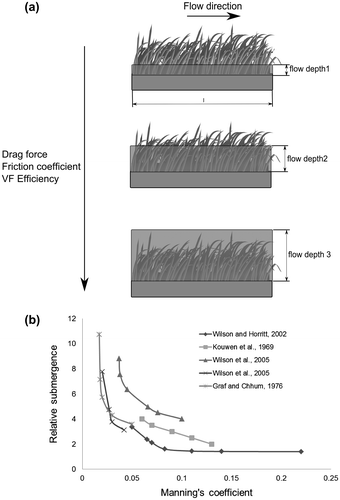
Figure 3 Sediment trapping efficiency as a function of particle fall number, derived from Deletic’s (Citation2005) experiments.
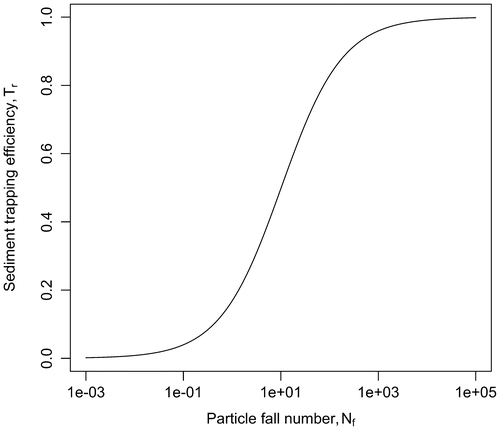
Figure 4 Schematic representation of the algorithm used in the Vegetated Filter Dimensioning Model (VFDM) for calculating vegetated filter width. RHHU, relatively homogeneous hydrological unit.
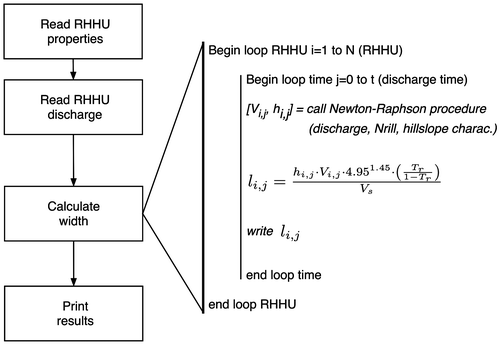
Figure 5 (a) Location of the Beaurivage River watershed and two stream gauges, of which one is located 5 km upstream of the watershed outlet and one at the outlet of the Bras d’Henri subwatershed; (b)Land cover distribution; (c) Soil texture distribution.
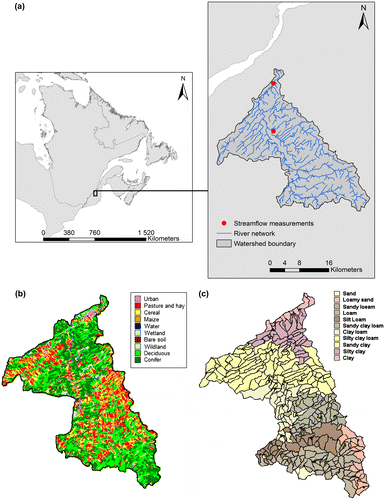
Figure 6 Precipitation and daily averaged stream flow in the Beaurivage River watershed used as input for the Vegetated Filter Dimensioning Model (VFDM); (a) rainfall, (b) snowfall, and (c) main outlet discharge (all data presented are for the 1969–2009 period).
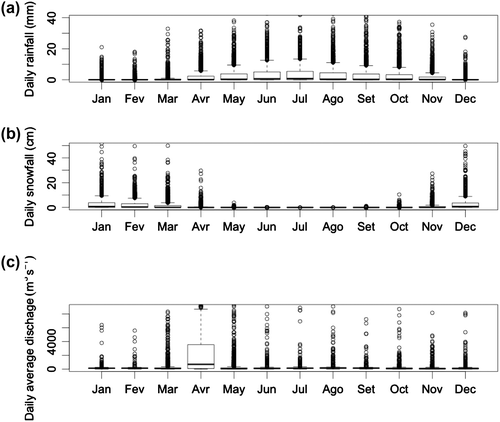
Figure 7 Sediment trapping efficiency of Beaurivage watershed calculated within Deletic’s (Citation2005) equation (Equation 4) and 40 years of hydrological simulations from HYDROTEL.

Table 1. List of parameters in the Vegetated Filter Dimensioning Model (VFDM) and sources for the parameterization.
Figure 8 Vegetated Filter Dimensioning Model (VFDM) simulated results of cumulative frequency of riparian vegetated filter strip (RVFS) widths over Beaurivage watershed, (a), (b), (c) and (d) correspond to B0= 0.5, 0.6, 0.7, and 0.8, respectively (vertical dot lines represent the average values for RVFS width for the corresponding Tr grey tone).
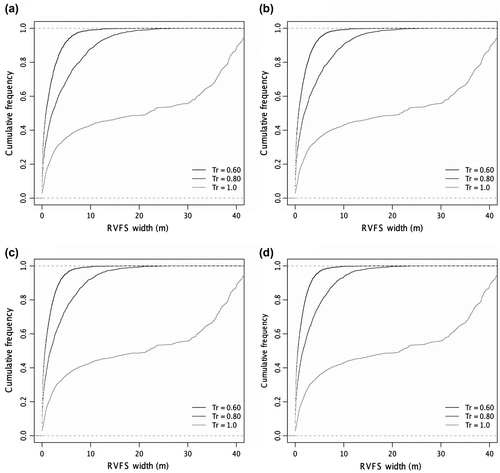
Table 2. Performance of the runoff simulation for the Beaurivage River watershed with respect to the period 1 October 1969 to 30 September 2009.
Table 3. Results for the Vegetated Filter Dimensioning Model (VFDM) riparian vegetated filter strip (RVFS) width simulations.
Figure 9 Optimized riparian vegetated filter strip (RVFS) width for Beaurivage watershed for three and four Tr (0.6, 0.8, 1.0) and B0 (0.5, 0.6, 0.7, 0.8) values, respectively.
